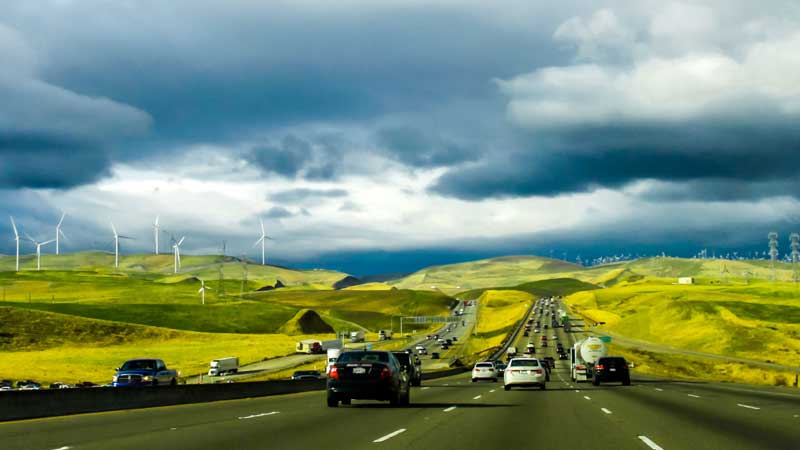California, the world’s fifth largest economy, is aiming to deploy another 25.5GW of renewable energy capacity and 15GW of new storage and demand response resources by 2032 over the next decade as it tightens its emissions targets again.
The California Public Utilities Commission (CPUC) has adopted a new 2032 greenhouse gas emissions target of 35 million metric tonnes (MMT) for its electric sector, down from its previous target of 46mmt.
This equates to an upgraded Renewables Portfolio Standard (RPS) of 73% by 2032, with 86% of all generation to be green house gas emissions free.
This new system plan portfolio differs from previously adopted plans as it includes more solar and battery storage, along with new long-duration storage, out-of-state wind, and offshore wind resources.
CPUC’s preliminary analysis of this new plan has already indicated there is sufficient space for all new resources on the existing Californian transmission system, with only limited transmission upgrades needed by 2032.
“Today’s decision provides direction for procurement of an unprecedented amount of new clean energy resources,” said Clifford Rechtschaffen, CPUC commissioner. “It keeps us on the path toward achieving our state’s ambitious clean energy targets, while ensuring system reliability.”
CPUC’s announcement was immediately praised for the scope of its new greenhouse gas emissions reduction target.
“I support the CPUC’s adoption of a lower carbon emission standard than it has approved in the past, which is particularly important when you consider the urgent need to quickly decarbonise California’s economy along with uncertainties in the accounting of carbon emissions in the CPUC’s modelling tools,” said Mark Specht, a senior energy analyst at the Union of Concerned Scientists.
“I believe a future target of 30 million metric tons in the next [integrated resource planning (IRP)] cycle will be necessary to put California on the path to reducing emissions from the power sector that appropriately responds to our climate emergency.
“Also, the CPUC made the right decision to leave intact its procurement order from last summer that does not include natural gas power plant upgrades as an eligible resource.
“The additional capacity of zero-emitting resources previously ordered should be sufficient to ensure grid reliability and replace retiring fossil-fuelled generation and the Diablo Canyon power plant.”










